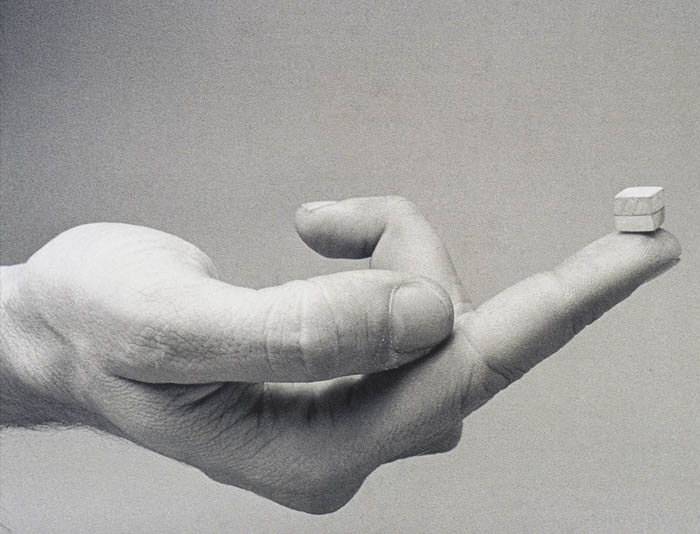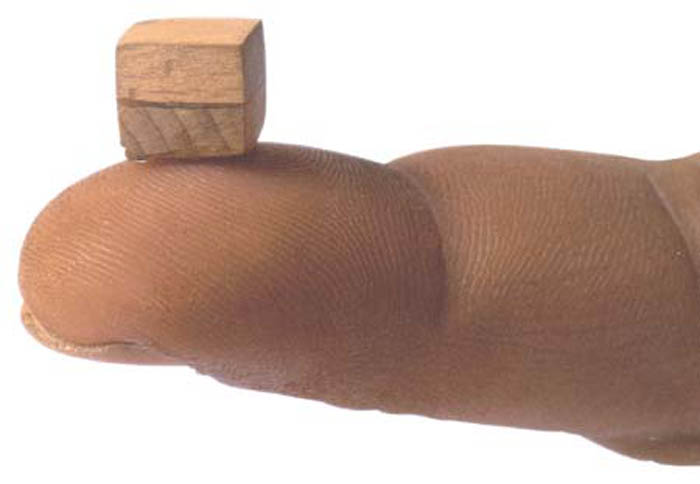A Tiny Wooden Cube as a Site of Crosscultural Friction and Collision
The installation artist Cildo Meireles, who is the first Brazilian artist accorded a full retrospective by the Tate Modern in London, is known and famous for his conceptual art. There is a rogue physicality to much of his work, yet it also manifests a formal elegance and economy.
He first made his name on the international stage in 1970, when he was one of four Brazilian artists to participate in Information, an influential exhibition at the Museum of Modern Art in New York that put conceptual art firmly on the map. Meireles exhibited Southern Cross (1969 – 70), a tiny wooden cube. One half was made from pine, the other from oak, and the two pieces were neatly glued together and sanded. This sugar-lump-sized cube has to be exhibited directly on the floor, and should ideally be displayed on its own in a large room. It is usually reproduced in larger-than-life close-up, balancing precariously on one of Meireles’ fingertips.

Southern Cross is a minimalist sculpture, on a Lilliputian scale: Meireles calls it an example of “humiliminimalism” – a humble brand of minimalism. He wanted it to be even smaller, “but when I sanded it down to my nails, I lost patience and stopped at nine mm”. But unlike most minimalist sculptures, it is no mere dull object, but it is meant to be as richly symbolic, sensuous and potent as an amulet.

Meireles’ father worked for the Indian Protection Service, responsible for the rights of indigenous tribespeople, and is said to have instigated the first legal trials against racially motivated murders. From his father – and from an uncle who lived deep in the forest – Meireles learned of the native Tupí tribe’s belief that oak and pine are sacred trees, and that fire was first discovered by the rubbing together of these two woods, with the softer pine bursting into flames. Through the rubbing together of these two timbers, the divine sanctity of the Tupí would manifest its presence, all the while hinting at this tiny cube’s ability to swallow the gallery up in flames. The potential for friction is further alluded to by the cube being placed on Meireles’ soft fingertip, as if he were about to flip it or roll it like a die, or knead it in the palm of his hand. In the catalogue for the New York exhibition, Meireles wove a Borgesian yarn about the “eastern” side of the cube representing modern urban Brazil and the “western” side representing the wild jungle side – though he didn’t say which was which.

Subtly embracing the viewer, Meireles’ miniature “cross” is a site of friction and collision, a crosscultural atom that may split or explode – or simply disappear – at any moment.
Read more about Cildo Meireles work on Insertions and Circuits – Circulation Mechanisms.

